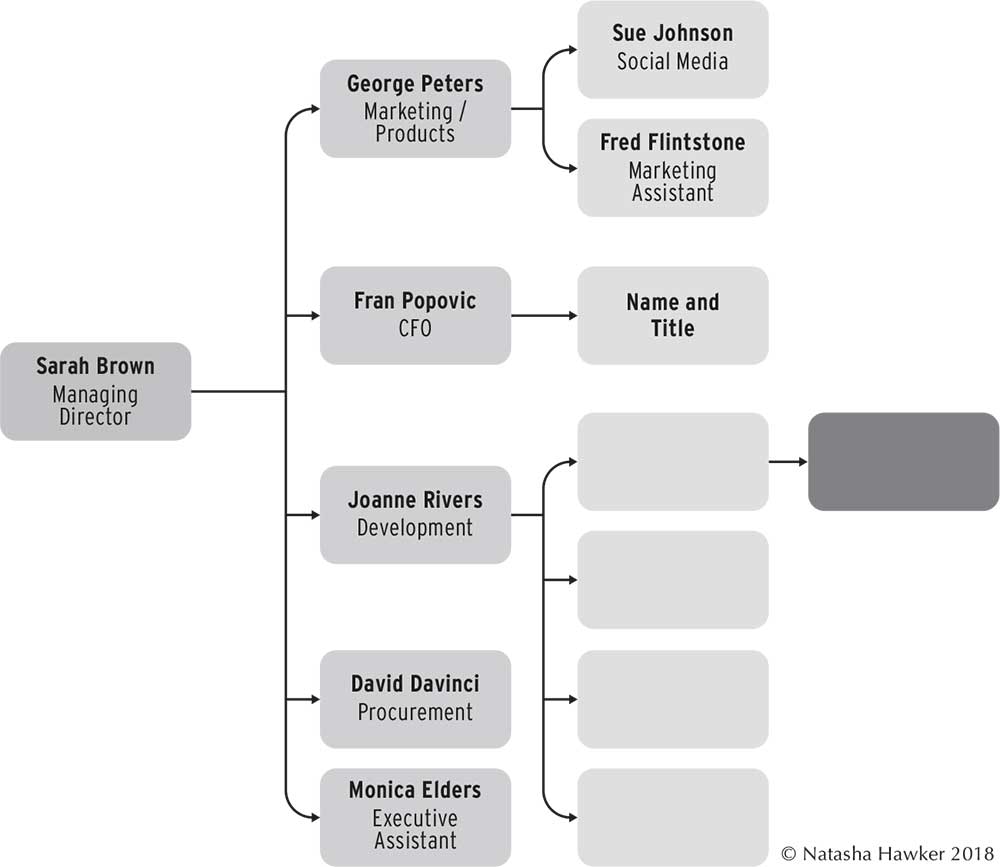We are lucky enough to share with you an excerpt from a fantastic book, From Hire to Fire and Everything In Between by Natasha Hawker.
This excerpt is from the first chapter, and is ideal for anyone in the early stages of building their business. See the end of this article for more information.
Uh oh – I think I need some help!
Orders are starting to pick up and your clients are as excited about your business as you are. You are running hard but there are only twenty-four hours in a day. You are starting to see some errors creeping in and you are concerned that if you muck up another order or leave it too much longer to get back to your client, your business will quickly start to decline. You know that your reputation is critical.
From a mid-size perspective, your wits and tenacity have got you this far, but you are not sure whether you are fully compliant with your legal requirements, nor do you think you are hiring the best that you can afford or getting the most productivity out of your employees.
It might be time to bring on some extra help. But how? You really never wanted to employ people and be the boss. What if you’re not a great boss? You don’t understand the employment relations legislation, you really dislike interviewing, and you’re worried about making the wrong decision. Essentially, you feel that with employees come issues.
You wonder whether you should continue flying solo, but you know there are ramifications if you do, mostly around the ability to grow past a certain point.
Growing and succeeding in business with a team will be one of the most challenging and rewarding journeys you will ever have. I liken it to having a baby. The idea seems great at the time of conception, and then you experience pregnancy which, whether it’s blissful or horrendous, can be long and uncomfortable. The birth can be challenging, but what a reward.
Then you get sleepless nights and no smiles or gratitude. Then when your baby smiles or giggles at you – wow, there’s nothing like it. Next comes the toddler phase – where you are constantly chasing and dealing with tantrums. Then comes structure with the start of preschool or school, and then, finally, growth and reward.

How do you know it’s time to grow your team?
So how do you know whether now’s the time to grow your team? It’s important to look at your business. Can you afford an employee, and what are the alternatives if you can’t?
Start by forecasting your revenue targets for the next twelve months.
If you already have a business plan, this will be as simple as looking at your existing targets. If you don’t have a business plan, download a template to get started.
Grab a piece of paper and write down everything that you currently do over a week (yes, everything), and allocate a time to it. How long does it usually take you to complete a particular task? Once you have completed this, leave it for a day or two and then come back to it; you will discover even more tasks that you had forgotten.
Group similar tasks into categories such as social media, finance, technology and business development.
Now it is going to get hard – really hard! It’s time for some honest reflection – what are you good at? What are your strengths and what do you need to focus on to grow your business? What could someone do better or quicker than you?
Part of the challenge of being an entrepreneur is being able to turn your hand to most things, given time, but this may not be the best use of your skills or your time. Put a red circle around these particular tasks – did you halve the list? If not, try again.
With the list of tasks that you are comfortable to give away, think about the people around you who may be able to help. One of my friends worked free for me for a couple of months out of Dubai because she believed in me and my business. So, are there any people in your network that might volunteer?
If you start with volunteers, even friends and family, remember not to take advantage of them. As soon as we could afford to, I took my friend to an expensive lunch to thank her for her work and support (and she is now an ongoing key member of my team). Starting with a couple of volunteers might help confirm or test whether your business is at a point where you can sustain employees.
This will also force you to structure roles and processes to deliver your product or service. Once you have decided which tasks you can reassign, think about how many hours this will free up for you.
You can then look to spend this time on work activities that will bring more revenue into the business. It is important to forecast the amount of revenue you can generate now you have additional time. If you can cover the salary of an employee with this expected revenue, then it is definitely time to hire.
When you are looking to grow a business, it is important that you start with your end game in mind as this will drive many of the early decisions that you make. By end game I mean – what is your intention for your business? Is it to sell in three years? Is it to hand it on to your children? Or is this your gig until retirement, when you plan to sell and sail around the world?
For example, we have a client who has a landscaping and garden maintenance business with about six employees. He is looking at growth opportunities in building maintenance, but he also knows that ultimately, he does not want to work very hard.
The challenge for him is that his business is a low-margin business, so he needs the economies of scale that come with a growth in headcount to drive up revenue and profit. As a result, he is looking to increase his employee numbers alongside client numbers to achieve his objectives.
Who do you need, and how can you organise them?
If you’ve decided it’s time to grow your team, don’t rush to Seek or Indeed just yet! First you need to consider how your business will grow, and how these new roles can support that growth.
Businesses evolve over time and, in small business, this growth is typically reactive rather than proactive. Do you agree? If you asked most business owners whether their business looks as they expected it to when they started it, most would answer no. It is more likely that you won a huge piece of work and you realised that you suddenly needed an employee, or two, or an entire team.
Organisational design is an area that large corporates spend a considerable amount of time and money getting right and it is a continuous process. I believe that if businesses spent more time on this area they would reap many benefits.
After all, it is essential that all the components of your business are working cohesively to achieve your ultimate outcome. Otherwise the risk is waste, missed opportunities, increased costs and inefficiencies.
Planning your organisation
Phase 1 – Organisation charts
Draw your ideal organisation chart. Who will sit where, who will report to whom and what will their titles and levels of responsibility be? Does your plan make sense? Or is it still based on the original business you started three years ago?
If you only have your original or a very dated chart, draw up your current organisation chart. It might look something like this:
Now think about your business plan and forecast how your business might need to look to service your future clients. Think forward twelve months or two years. What do you expect to be some of the technological, product, skills or opportunity impacts? How will this affect your team and resourcing requirements?
Consider completing a SWOT analysis for your business at this point.
A SWOT analysis enables you to review your current or future strengths, weaknesses, opportunities and threats. If you have not done one before, use the following grid as a guide.
For this exercise, let your mind roam. Just list all strengths, weaknesses, opportunities (these can just be ideas) and potential or real threats to your business. Once you have answered these questions, you can use this SWOT analysis to develop strategies for achieving your business goals and generating contingency plans, including hiring new employees. This exercise can be very revealing.
STRENGTHS
- What advantages does your business have?
- What do you do better than anyone else?
- What factors mean that you get the sale?
- What is your business’s Unique Selling Proposition?
WEAKNESSES
- What disadvantages does your business have?
- What could you improve?
- What should you avoid?
- What factors lose you sales?
OPPORTUNITIES
- What good opportunities can you spot?
- What interesting trends are you aware of?
- What changes in the market or industry can be used to benefit your business?
- What gaps or needs in the market can you fulfil?
THREATS
- What obstacles do you face?
- What are your competitors doing?
- What changes in the market or industry may have a negative impact on your business?
- Do you have bad debt or cash-flow problems?
The next step is to compare the two organisation charts – are there any glaring omissions or opportunities to merge roles? Is one area top heavy, or over- or under-resourced? Are there opportunities for developing certain roles with multiple skills so they can cover other roles?
This will reduce your exposure to attrition and enable you to effectively cover your annual leave schedule. This will also address the development desires of your employees and minimise financial impacts to the business.
Now you have your road map for the changes you may need to make to the business over the next six to twelve months. Once this is clear, it will make it easier to work towards your goals.
Phase 2 – Job descriptions
Draft job descriptions based on the roles in your organisation chart, including the tasks you listed under the Part 1 Hire chapter – How do you know it’s time to grow your team?
Review all the job descriptions you’ve written. Will these roles work logically and cohesively, or do you need to make further adjustments? Are there any gaps in task responsibilities or missing links between roles?
Phase 3 – Transition plan
Review the current state and future state of your business and plan how you will transition over time to the future state.
Conduct quarterly reviews against your transition plan to check on progress and adjust as required.
Now that you’re clearer on the positions you need to fill and how they fit into your organisational plan, it’s time to consider which type of employees you need – permanent, casual, fixed-term, independent contractors, temps or volunteers.
In Summary
This is an authorised excerpt from the book, From Hire to Fire and Everything In Between by Natasha Hawker. The book reveals Natasha’s 9 Step Employee Lifecycle, the framework for all the factors involved and relevant templates to keep you on track and out of court and makes managing your employees career journey easy.
You can find out more about the book, and stockists, on the books web page.
About the Author
Natasha Hawker has been presenting for almost 20 years, both nationally and internationally, sharing her experience and wealth of knowledge of all aspects of HR, people management and employment relations. You can read more about Natasha on her website.





